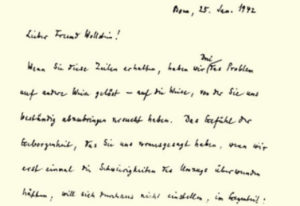In the wake of more horrific police killings, it’s important to remember that Black cops cannot fix America’s fundamentally broken and racist policing system.
This piece is a commentary, part of The Appeal’s collection of opinion and analysis.
On January 8, an off-duty sheriff’s deputy in North Carolina killed Jason Walker, a 37-year-old Black man. The cop who shot Walker, Cumberland County Sheriff’s Deputy Lt. Jeffrey Hash, told police that Walker had jumped onto his car and smashed his windshield. Witnesses later said they watched Hash respond by exiting his car and shooting the unarmed Walker dead. Sadly, Walker’s name joins the list of many others killed because of police violence. And on February 2, the most well-known name added to that list in recent weeks was that of Amir Locke, who was shot to death by the Minneapolis Police Department in his home.
In response to Locke’s death, people are once again demanding that policing be fundamentally altered—or abolished for good. One way of changing how police do their job, as some have suggested for years, is by having more Black representation on police forces. Joe Biden, for example, ran for president in 2020 on a platform that included providing more funding for departments to diversify their ranks. The basis of the argument is that Black police officers—because of their Blackness—are supposedly less likely to carry out the violence that the institution of policing represents. Therefore, they can be the ones to help overcome that violence, especially in Black and brown communities.
This argument is misguided. More police officers are not needed—and certainly not Black ones.
According to recent statistics, Black people are 3.5 times more likely to be killed by police than white people, and more than half of police killings go unreported or misclassified. These are the realities Black people have been forced to live with due to American policing’s roots in violence, racism, and white supremacy.
Policing as an institution evolved from slave patrols in the early 1700s and from separate efforts to prevent labor organizing. Policing today remains centered around violence and the oppression of Black and brown people. The argument that a diverse police force can prevent violence is almost as old as policing itself. In fact, the NYPD’s first Black officer, Samuel J. Battle, joined the force in 1911 in an attempt to improve relations between the NYPD and Black New Yorkers. Battle instead faced severe racism from his own officers, including receiving a note with a likely fake bullet-hole in it telling him to quit. More Black officers followed Battle—but violence by police did not stop. And still, despite these statistics and history, some believe that with the “right” people—good people perhaps—policing can be done right.
In the late 1960s, Afro-American columnist John Lewis reflected on the abuse of power and brutality by police officers across the country. Lewis was particularly angered by the murder of a Black man named Elijah Bennett who was killed on October 8, 1968, by a white officer in Washington D.C. for merely crossing the street at the wrong place and time.
Lewis’s solution to violence by the Metropolitan Police Department of the District of Columbia —and police violence across the country—was to alter the composition of law enforcement in a way that included Black police officers.
“Black policemen,” as Lewis would go on to write, “do not shoot [B]lack [jaywalkers].” While they may not have explicitly shot Black jaywalkers, Black police officers certainly made their mark of violence against their own.
In 1967, President Lyndon B. Johnson’s Commission on Law Enforcement and Administration of Justice released a report titled The Challenge of Crime in a Free Society. The report noted that “the relationship between the police and the community is so personal that every section of the community has a right to expect that its aspirations and problems, its hopes and fears, are fully reflected in its police.” Not only were Black people pushing for increased police representation, but local and federal governments had joined the chorus.
In response, cities across the country began targeting Black people in recruiting campaigns. In Philadelphia, where communities had historically endured police violence, the city began urging its residents via billboards to “cop in, don’t cop out,” and to “join [Police Commissioner Frank] Rizzo’s team.” Despite these efforts, the outcome that followed was not what advocates for Black police officer inclusion and recruitment wanted.
Philadelphians later noted that those Black officers who joined were as brutal, if not more than, white officers. Even Black officers who perhaps thought of themselves as being pro-Black—or at least not anti-Black—engaged in aggressive encounters against Black Philadelphians who they viewed as a threat against law and order.
In 1967, the same year the commission released its findings, University of Michigan researchers Donald J. Black and Albert J. Reiss released a report underlining the distasteful feelings some Black police officers developed toward Black people. While the report revealed that Black officers were not as prejudiced as their white colleagues, additional findings from the report were unsettling. Accounting for 28 percent, a small but significant minority of Black officers who worked in predominantly Black precincts were either highly prejudiced or prejudiced towards Black people. Some of these officers not only fostered anti-Black attitudes toward other Black people, but also held the same violent attributes their white colleagues held. Referring to other Black people, one Black officer told researchers “These people are animals. They don’t do anything for themselves.” Another officer appeared to warn their white colleagues, “I’m talking to you as [a] Negro, and I’m telling you these people are savages. And they’re real dirty.”
The culture of racial discrimination in policing was alive and well within Black officers, even if present among a few. Nonetheless, when you have a profession vested by the state to use lethal force, be it 1 percent or 28 percent of Black officers who show prejudice against Black people as indicated by University of Michigan researchers, any percentage is too much when it could lead to police violence and in turn, a life lost.
With more Black people joining the police force, those who became police officers, as it turned out, were not joining the force to fight for civil rights and against systemic racism. One of the reasons they were joining, as legal scholar James Forman Jr. notes, was “because they needed a job.” And because they needed a job, they did what the job entailed: policing the public.
Economic factors such as employment and job stability heavily influenced the growth of policing as a profession for Black people. During the 1960s, with a rise in unemployment, policing appeared to be a stable profession. Black people entering the police force saw the job as a way out of poverty and an opportunity to achieve economic mobility they perhaps had not experienced before. Although police work paid humbly and did not bring in much wealth compared to other jobs on the market, it was far better than many alternatives for Black people. For the ones who joined the police force, this was their chance for a better life. But at what cost?
One thing has held true since Samuel J. Battle joined the NYPD in 1911 as the city’s first Black officer and decades later during the mass campaigns to hire Black police officers in the 1960s. Black representation did not yield the results some had hoped. And today, it may not be an effective strategy for addressing police violence like reformers are led to believe. Researchers have come to this same conclusion.
In response to the murder of Michael Brown in 2014, a 2017 study by Indiana University Bloomington researchers looked at whether more Black police officers was associated with a decrease in police-involved homicides of Black people. They found that results were mixed. In some cases, adding more Black officers was actually linked to an increase in violent encounters toward Black people. In other cases, adding an overwhelmingly large number of Black officers was linked to a decrease in encounters. Overall, “for the vast majority of cities, simply increasing the percentage of [B]lack officers is not an effective policy solution,” the researchers wrote.
Despite reformers’ belief that Black representation on the police force can curb police violence, this only adds representation to an existing historically violent institution. The root problems of violence still go unaddressed. And as historian Khalil Gibran Muhammad explains, we cannot use “the very instrument that reproduces anti-Black racism” and violence as the “same tool that saves Black people.”
Muhammad is right. Police have failed to protect against violence and they should not be expected to. After all, they perpetuate it. This may hold true even with more Black representation on the police force. Instead, alternative demands to address police violence beyond Black representation on the police force must be made today.
Shifting demands from surface-level reforms to what Black people need to survive might be more successful in addressing police violence. As Derecka Purnell and Marbre Stahly-Butts suggested in the New York Times in 2019, free public transportation, living wages, and quality housing do more to address the root causes of crime by helping people out of poverty. Putting resources and money toward social services, the creation of jobs, funding for healthcare responders, or better education systems might all be more effective.
Black people are dying, and they deserve demands that get to the root of what Black and oppressed communities need not just to live, but to thrive. As such, it is long past time that those demands stopped focusing on representation in an institution that has—time after time—discarded Black life.




